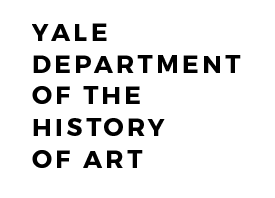Barbora Bartunkova
Barbora Bartunkova is a specialist in nineteenth- and twentieth-century art, photography, and film.
Her interdisciplinary research focuses on the relationship between art and politics from the interwar years to the Cold War era. Her dissertation, titled “Sites of Resistance: Antifascism and the Czechoslovak Avant-Garde,” investigates the capacity of art to confront fascist ideology and violence between 1932 and 1945. This project was awarded the 2022–23 Twelve-Month Chester Dale Fellowship at the Center for Advanced Study in the Visual Arts at the National Gallery of Art in Washington, D.C.
Bartunkova is the Provenance Specialist in the Department of Painting and Sculpture at The Museum of Modern Art (MoMA) in New York. Previously, she worked in MoMA’s Department of Drawings and Prints as the 2018–19 Andrew W. Mellon Museum Research Consortium Fellow. Bartunkova has held curatorial and museum positions at the Royal Academy of Arts in London, the Lobkowicz Collections in Prague, and the Museum of Decorative Arts in Prague. She also worked at Annely Juda Fine Art, a leading modern and contemporary art gallery in London.
Recently, Bartunkova has contributed research and catalogue essays to major international exhibitions, including Toyen: The Dreaming Rebel (National Gallery Prague; Hamburger Kunsthalle; Musée d’Art Moderne de Paris, 2021–22) and Engineer, Agitator, Constructor: The Artist Reinvented (MoMA, 2020–21).
Bartunkova holds an M.A. with Distinction in the History of Art from University College London (UCL), where she also earned her B.A. in French with Film Studies. Her M.A. Dissertation, “Karel Kachyňa’s The Ear and Cultures of Surveillance in Communist Czechoslovakia,” was awarded the Oxford Art Journal Prize.
SELECTED PUBLICATIONS:
“Post-Apocalyptic Landscapes: The End of August at the Hotel Ozone and the Czechoslovak New Wave.” In Cinema and the Environment in Eastern Europe: From Communism to Capitalism, edited by Masha Shpolberg and Lukas Brasiskis. New York: Berghahn Books, 2023.
“The Poetics of Ethereal Forms in Jindřich Štyrský’s Aquarium.” In The Kunsthalle Praha Collection: 50 Highlights, edited by Barbora Ropková, 68–71. Prague: Kunsthalle Praha, 2023.
“Toyen and the Specters Haunting Interwar Europe.” In Toyen: The Dreaming Rebel, edited by Anna Pravdová, Annabelle Görgen-Lammers, and Annie Le Brun, 155–58. Prague: National Gallery in Prague, 2021.
“Jindřich Štyrský: White Star Line, 1923.” In Engineer, Agitator, Constructor: The Artist Reinvented, 1918–1939: The Merrill C. Berman Collection, edited by Jodi Hauptman and Adrian Sudhalter, 162–65. New York, NY: The Museum of Modern Art, 2020.
“Surrealism Against the War: The Shooting Gallery and Hide, War! by the Czech Artist Toyen.” post: notes on art in a global context (October 2019). New York, NY: The Museum of Modern Art.
“Facing Death, Confronting Human Nature: The Ascent (Larisa Shepitko, 1977).” Special Dossier: 100 Years of Soviet Cinema. Senses of Cinema, no. 85 (December 2017).
“Confronting the Screen. Pipilotti Rist: Pixel Forest at the New Museum.” NECSUS: European Journal for Media Studies 6, no. 1 (May 2017): 245–260.
